#I'm going to be generous and assume it's a cultural difference rather than you being a moralistic ass
Explore tagged Tumblr posts
Note
idk it's kind of fucked up to laugh at your brother who's clearly has s problem. you're not better than him
Anon, I'm going to assume you've never had a family member in active addiction. There really is nothing you can do. That's not defeatist. That's a fact. You cannot help someone who does not want to be helped. They have to want to save themselves. When my mother and I talk about my brother, when we laugh despairingly about the fact that he's in jail again, this is in fact gallows humor. We take no joy out of it. We're connecting over relief, over at least he's not dead, thank Christ.
My brother has had a problem since he was a teenager and had anger issues beforehand. I had to physically throw him out of the house once when he was seventeen and I was twenty because he was threatening to punch our little stepsister. This is the man who regularly crashes out at anyone and everyone. The man I've been on more than one crisis call with while he was speeding the wrong way down a highway threatening to veer into incoming traffic. The man who told me that I'm not a real man, our mother just groomed me into thinking I had to be strong while she tried to emasculate him (read: tried to get him to engage his anger in an emotionally healthy way). This is the man currently dickriding our birth father, who hit us growing up and tried to kill me with a 2003 Ford Windstar in 2017. Our birth father who's the reason my fingertips are all crooked.
I hope and pray he gets better. I do not want to attend his funeral, not while he's in his 20s. But that seems like such an overwhelmingly likely scenario that I'm emotionally preparing for it preemptively. All I can do is laugh.
I hope you never find yourself in such a situation. With all empathy and respect, step off.
#obviously I'm not obligated to explain my very specific family situation to you#to justify talking about my little brother posting DUI memes literally days after getting bailed out of jail for DUI#but I thought I'd make a blanket statement#yes it's fucked up. this is a fucked up situation#I'm going to be generous and assume it's a cultural difference rather than you being a moralistic ass#askertorte
7 notes
·
View notes
Text
Humans are weird - life expectancy
Quinn always found the idea of figuring out how they would spend their time if they only had two-hundred years to live to be an interesting hypothetical. There were animals out there who lived such short lifespans after all, though none of the ones they had encountered had the mental capacity to develop long-term goals, but if they could what would they choose to do? It was one of their favorite questions to ask to get to know someone, what they prioritize.
Or at least it was until they met Edith, a researcher part of a species that had just barely begun their existence as space-faring creatures, more importantly: a species that struggled to even make it to a hundred, let alone two-hundred years old.
...The end of her first day was rather awkward, I mean how could they have possibly known that that species would just so happen to be the first ones with such a short lifespan that had managed to make it into space.
Lords it was awful, remembering it still makes them wish they had the same memory issues as the Soweps
----
After being shown around the Cultural-Exchange Station, (C.S. for short), Edith decided to go join Quinn in the Lounge. A good, casual chat to get to know one of the people she would be spending at least the next few years with seemed like a good way to spend her first day aboard. What could possibly go wrong? It wasn't like there was much else she could do, unfortunately. Quinn had made it quite clear that she didn't have to couldn't start work until the next week, something about giving her time to 'get settled before entrusting her with a position on the team'.
Under normal circumstances, that would've been great... but now? After she just spent a week trapped alone on a ship without the ability to do anything productive? She'd be damned if she was going to spend another minute of her day just sitting around alone in an unfamiliar bedroom with weird furniture. Fixing her room could wait until tomorrow. She just had to go do something, anything that wasn't using her sitting by herself in that room. She walked over to one of the terminals to pull up the way to the lounge, or at least what she assumed was the lounge given the fact that nothing was labelled, before heading off to find Quinn. Hoping that her horrible sense of direction wouldn't embarrass her on her very first day.
She made off towards the general direction of the area on the map, passing by numerous rooms with widely different appearances from one that seemed oddly... cave-like? to another that would fit in more in an aquarium than it does a space station, or atleast what you'd expect in a human one anyways. Turning the corner into the maze of long corridors, Edith continued straight, which luckily, was in fact the way to the main lounge area.
Edith: "Hi Quinn!" She shouted from halfway across the room as she walked towards the couch they were sitting on.
Quinn: Hey, did you need something?
*Carefully choosing her spot to not make them uncomfortable, Edith sat on the other side of the couch*
Edith: Nope, I just wanted to walk around a bit. Get to know everyone better and stretch my legs a bit more, you know?
Quinn: Oh okay that's cool.... How's setting up your room going?
Edith: I haven't started yet. I'm still thinking about where I'm going to put everything.
Quinn: Not at all because you're procrastinating???
Edith: *GASP* How could you accuse me of such a thing? I would never~~~
Quinn:... That reminds me I never got around to asking,
How would you spend your life if you only had 200 years to live?
Edith: where did that come from?
Quinn: We were talking about procrasination and that got me thinking about time which made me remember I didn't ask you about how'd you'd spend 200 years. It's just something I ask everyone.
Quinn:...sooo I know it 's a really short amount of time but how would you spend it?
Edith: short???
Quinn: Yeah??? Am I missing something here?
Edith: .... Humans generally only live 80ish years naturally. Like at most some people make it into their hundreds but that's extremely rare
Quinn: ....oh
Edith: .... yeaaah
Quinn: I just remembered I actually have to go work on some very long paperwork- *They rush to get up, nearly tripping over their own legs* -I'll see you later! *They continued as they started speed walking away, the look on their face told her that they'd probably be running if it wouldn't make things more awkward*
Edith could barely stop herself from bursting out laughing at the scene... She'd have to tease them about that later....
Hmmm.....Good ways to answer how'd she'd spend 200 years???
....Annoying them?
Well She'd have plently of time to think about it while she unpacked.
____
Side note: This was going to be an angsty conversation between the two of them but the second I started writing the first bit the idea of it being one of the first questions Quinn asked Edith popped into my head and it just took on it's own life so I hope you enjoyed this instead :)
#I had another draft I was planning to finish before this but writing this was more fun so-#I'm soo glad I finally had an excuse to include Edith's pov#sorry for how long the narration was I've been reading a lot of fanfics lately and it's apparently affecting how I write lol#also sorry if the pacing is weird this one took me awhile to figure out#my writing#humans are weird#humans are space orcs#humans are space oddities
87 notes
·
View notes
Note
Can we see more about pyliod....he's so silly. ♥️ kissing him on the head.
I'm obsessed with how khait mimic real world bulls but also goats in their behaviors. are there any other behaviors/traits they mimic from IRL animals?
Which leads me to the question: what separates livestock from pets?
Esp for brakul, I'm assuming the animals he lived around when he was younger were livestock and meant for eating - but what if you had a favorite? Was it different for janeys? Hibrides?
Also leads me to another question: fish keeping - is it a hobby? Are fish just seen as food or can they be considered decorative?
(please forgive any spelling errors it's 1 in the morning for meeee)
Don't know if you saw this post but this gives a good rundown of khait behavior. They're based on wildebeests and most of the descriptions of their social behavior are accurate to them, other aspects of their behavior is pulled mostly from other bovids (other antelopes mostly. l swear I saw urine self-anointing+wallowing by topi or hartebeest or smth in a documentary once, but in terms of bovids that might just be a goat thing. Cervids also do that). Not much of their behavior is actually based on cattle, besides using cattle as a model to inform the concept of a hypothetical domesticated antelope. There's also some horse influence, though in that case it's pretty much exclusively to inform the concept of a non-horse domestic ungulate used Primarily for riding, and their interactions with humans.
The like, general definition of distinction between livestock/pets would be a venn diagram between 'livestock' 'working animals' and 'pets', with livestock being animals raised for production (meat, wool, fur, leather, eggs, milk, etc), working animals being used for physical labor or otherwise performing utilitarian 'jobs' (plow animals, riding animals, ratters, herders, guardians, etc), and pure pets having no directly 'productive' role and exist for companionship, ornamentation, etc (though the definition of a pet can be pretty nebulous, especially if you're framing it around emotional attachment instead of the lack of a productive angle). These categories can heavily overlap.
This is just a generalized answer (not even in-universe). How a culture defines these concepts separately (if it does at all) is going to vary extensively.
Brakul grew up surrounded by livestock/working animals and virtually no animals kept EXCLUSIVELY for companionship. The core subsistence method is a mix of settled agriculture (producing primarily grain) and seasonal pastoralism of cattle and horses (producing primarily dairy and wool), occasionally supplemented by hunting and fishing of wild game. The diet revolved around dairy and grain with meat being eaten irregularly, especially for people who aren't rich (which in this particular context is primarily measured in the quality and quantity of livestock- someone wealthy in cattle can afford to slaughter more frequently). Slaughtering a cow is a special occasion. Brakul's clan was on the lower end of the livestock wealth scale, so he ate meat infrequently and almost never his Own livestock (mostly eating hunted/fished game, meat given as gifts or in trade, meat provided by the ruling clan by social obligation).
(This is also broadly true of animal husbandry in Real Life across history prior to industrialized farming- most livestock is more valuable alive as a continuously replenishing resource (milk, wool, eggs, pulling plows, etc) and thus would be slaughtered for personal use infrequently. In class stratified societies, the majority of animals raised for meat would often feed upper classes rather than the people actively involved in rearing them. Some pastoralist societies will rarely or virtually never slaughter their animals for meat, as they are wholly relied on for products they produce while alive.)
So Brakul existed in a context where it was very possible to get attached to livestock and working animals. A lot of basic survival revolved around the dairy and wool the livestock provide, there are high emotional stakes in their survival and well-being, so personal attachment to these animals (even those likely destined for slaughter) can come naturally and be beneficial. The concept that's more alien to him is pure companion animals that don't really do anything directly productive. House dogs kind of freak him out because they're SO different from the dogs he was used to (extremely independent livestock guardians that don't really bond with people, and herding dogs that bond readily with their owners but are notably intelligent and self-sufficient). Encountering dogs that are utterly dependent on their owners and desperate for human attention was like 'what the fuck is wrong with that thing? sad'.
Pretty much the exact reverse situation for the characters from noble families. They would rarely be in close contact with livestock or subsistence level working animals (if anything, they/their families own land and livestock that is entirely raised by peasant workers), and instead would have most contact with pets/ornamental animals/leisure type working animals (hunting dogs, sport khait), and animals used in transportation (cart khait and oxen). They have VERY clear, clean-cut delineations between 'pet' and 'food' (though still not as much as is common in industrialized societies where most people are completely and utterly disconnected from the sources of their food. They're still Connected to the process, seeing animals being slaughtered is a part of daily life). They also would have eaten meat on a much more regular basis, while having little to no personal involvement in its production.
Wardi culture as a whole is not big on companion dogs (there are a few companion dog 'breeds' within the region, but most are hunting or herding dogs). Polecats are by far the most common companion animal in this cultural sphere (they technically fill working functions as ratters, but are mostly kept as housepets). Other animals kept purely as pets are mainly ornamental fowl and ducks. There's also a kind of pygmy horse breed that is kept as a companion animal (reminder that horses in this setting share the size range of goats).
Faiza, Couya, Janeys and Hibrides all grew up with pet polecats and hunting dogs, and sport khait owned by their families. Hibrides had pygmy horses as a kid. In the present day, Janeys' household has two hunting dogs that he doesn't like all that much, he also got two polecats for his children (one of which died tragically after being thrown from a window by his eldest), and has 14 total khait (12 of which are Brakul's) (technically owns another herd and a herd of cattle, but has nothing to do with them. It's an investment). Faiza likes dogs quite a bit and owns three bred hunting dogs and one feral dog she took off the street, also two khait (she owns land and the animals are kept there).
Re: fishkeeping. There's going to be plenty of variation in a global context, but broadly speaking keeping fish as a hobby/for display/other non-meat purposes is going to be on the rarer side in this setting. This is a limited practice in Imperial Wardin (you'll get the occasional wealthy home keeping fish in a courtyard pool but there's no traditions built around it). In terms of nearby civilizations, it's a much more significant practice in Bur, where water gardens with ornamental plants and fish are integrated into temples, city layouts, and wealthy homes.
#Also keeping animals PURELY for companionship is going to be rare in this setting overall. The vast majority of the world's population#is existing at subsistence level and maintenance of an animal that provides no practical benefit in return (as much as one can argue#that emotional companionship is a practical benefit) is unsustainable in a lot of contexts.#Though sometimes the 'practical benefit' can be intrinsic to the animal enough to lower this barrier- ie any dog can benefit its owners#by barking to alert of intruders (and may be able to mostly fend for itself and not require a massive investment in resources)
30 notes
·
View notes
Text
So @awooooooooooo asked me if some of the condescending and veiled racist attacks on Korean sasaeng etc affect how you interact with other fans or how you feel about kpop as a cultural export? Does the fan culture feel very different within and outside of Korea to you?
Generally, I'm extremely pleased that foreigners like Kpop as much as they do, because I assume that it has the same effect on them as, say, me really liking Edith Piaf and Charlotte Gainsbourg has on me about the French - it makes me like the culture, and feel friendly towards the people of France, and interested, in a diluted but benign way, in the well being of French people. I adore that kpop makes people learn 한글, and sound out Korean words.
Fan culture both does and does not feel different inside and outside Korea, but of course, I've only seen footage of any of this. Western concerts seem to have a more 'free' energy than Korean ones, where everyone sits very orderly with their shiny bulb wand things and chant like well trained cheerleaders like the band told them to, I guess, but overall? The people who get parasocial seem to be the same kind of parasocial. The people who want to write RPF write RPF. The ones who really want one on one face time with the members will spend the money and enter the lottery and get that thrill.
The thing that I've found regrettable is that some Western people who are uninformed about Korean culture have managed nevertheless to absorb Korean misogyny and heap it on Korean women they decide to disapprove of, this time in English, and talk shit about Korean women amongst themselves. I find this painful.
Incredibly long essay you are not at all obligated to read follows, because I needed to let my thoughts out.
One of the first things that caught my attention about kpop in 2024 was hearing on the news that SM, the entertainment company, had been sent 1,000 funeral wreaths to be placed outside their HQ, because fans of some group really hated the idea of a member who had been 'suspended' for some sort of infraction coming back to work again with that group. The group was Riize, who I'd never heard of, and the boy was Seung Han, who I have never heard sing but now I know his face. The infraction was that photos he'd taken while cuddling a girlfriend in bed had leaked. In the end, they rescinded his membership in Riize.
Because I clicked on that youtube news clip, the algorithm lead me to a bunch of white people screeching about how 사생 (which all of them pronounced this word every which way so I had a hard time figuring out wtf they were saying, because 사생 is a very Idol fandom culture specific neologism rather than an actual Korean word in common usage) were all pathetic crazy bitches, and why can't these Korean fans let Idols have normal lives and have romantic partners and it's so parasocial and ridiculous and just ... heaping contempt.
But that perspective is fundamentally blind to the actual exchange that's going on between Idol and Fan. Idols are not just selling music and dancing and performances. They're selling you a fantasy of availability. And the revulsion that the most devoted/ obsessed/ unhinged (take your pick) Korean fans express when they learn that their Idol has a girlfriend actually comes from a place of deep propriety and extreme commitment to respecting the boundaries in monogamy. To summarize: It is wrong to even have sexual fantasies in the privacy of your head about someone else's partner. So if someone wants to be a sex symbol, and trust me, most Idols do, then they can't make their relationship public, because Korean propriety demands that any decent person stop thinking about a partnered person as sexual. You can't go to a concert of a partnered up boy and scream when he shows you his abs. You can't go to a fan meeting and ask that he hold hands with you if he has a girlfriend. It's just WRONG. Idols are dead to the Fan once they actually have a romantic partner, because that's what a decent Korean woman is supposed to do - kill inappropriate feelings.
And the Idols know this. Which is why they hide their relationships like they're state secrets, or don't have them at all. Everyone sensible assumes that the former is more common than the latter, and honestly all that most fans ask of Idols is that they not breach that boundary.
The sanctimonious glee that some of these commentator youtube people exhibited in excoriating a subset of Korean women that I essentially see as misguided and frustrated, without attempting to understand what is going on, in defense of a professionally attractive man who was set to give them entertainment thrills was very ugly. It felt a bit like someone really liking the concierge at the luxury hotel they were staying at in a foreign country, but hating the rest of the people who live in that country that don't serve to make their vacation fun.
I also need to point out that Idols' activities in Korea are all engineered to create this feeling of a romantic connection with the Fan. I learned about this literally yesterday but apparently Ateez had a fan cafe set up last year, where you could go to a photo booth that generated a series of sticker photos that looked for all the world like you took a couple's shot with each of the members as long as you placed yourself correctly within the pre-set photo design. Do you see how this might be not a great thing to make available, but also why it would be so tempting? The either actually crazy or crazy seeming women are not generating this deranged energy all on their own, is my point.
Did I think the funeral wreath thing was a healthy and kind thing to do to Senghan, formerly of Riize? No. But did Seunghan break the sacrosanct rules of his profession? Yes. Do Korean women absolutely hate it when men break rules and norms? Yes. Do they have any real avenue to express that in a way that can change reality in a larger arena of their lives? Not really.
Was the whole funeral wreath sending action simply some crazy bitches who want to fuck this boy Idol being furious that he's never going to fuck them? No, it wasn't. That's too direct, sexually open, crude and explicit. It's a very Western way to think. What Korean stans want is for the Idol to fulfill his function as an Idol - to be an object of adoration, who can be the (almost blank) receptacle for her feelings.
And one final point: Is openly sneering at women about some handsome guy who is bound to be sexually repelled by them misogyny? YES IT IS.
15 notes
·
View notes
Note
Is there anything good (positive achievement) about the Valyrian/ghiscarian empires? I feel GRRM didn't bother giving them nuanced and interesting history beside mass slavery, rape and genocide, esp the ghiscarians they are mash up of the all the racist oriental tropes you can think of
Hi anon, this is a really good question. I think you can look at it two ways.
On the one hand, if we're analyzing the books from a literary perspective, GRRM's portrayal of the entire continent of Essos is pretty Orientalist and doesn't hold up that well. And we can blame this to some extent on GRRM being a white boomer who clearly did not think all that deeply about the stereotypes he was playing into when he created his "exotic" eastern continent. 90s fantasy was rife with this stuff (even my beloved Robin Hobb is not completely immune-- I'm looking at you, Chalcedeans), and at the time Orientalism was, much like critical race theory or decolonization, a grad school level concept, unless you ran in activist circles. You didn't have Tumblr and Twitter and TikTok and Youtube generating Discourse, you had to actively seek out different perspectives. And ex-hippie liberal white boomers often assumed that they already had the right perspectives, that they knew what traps to avoid, and so you'd get 90s SFF authors thinking they were very cleverly subverting these tropes by going, "I know, I'll have an intensely misogynistic culture of desert dwelling nomads who have harems and slaves but I'll make them white." It was pretty bleak. Luckily for all of us, fantasy has come a long way since then.
And yeah, once you see the Orientalism in ASOIAF, you can't unsee it. Lys is basically the fantasy version of the "pleasure planet" trope, the Dothraki are a stereotype of the Mongol armies without any of the many positive contributions the Molgols made, Qarth is like the Coleridge poem come to life with people riding camels with jeweled saddles and wearing tiger skins, with its women baring one breast and it's sophisticated assassin's guild, and Mereen has its pyramids. The entire continent is brimming with spices and jewels and pleasure houses and people saying "Your Magnificence." It is also a place of blood magic and dragons and Red Gods and shadowlands. It is everything exciting and "exotic," juxtaposed against what appears to most readers to be very mundane--septas and pseudocatholicism and maesters in the citadel. So yeah, it's an Orientalist's fantasy world, and the point of all this is not necessarily to cast it as evil per se, but to cast it as "Other" (and to be clear, Orientalism is harmful and GRRM deserves the criticism he gets for leaning into stereotypes). Valyria and the Valyrians are certainly included in that-- they are explicitly Other as foreign born ruling family in Westeros, and they are treated that way both in-world and by the narrative.
The question then becomes, although GRRM's depictions of Essos lean heavily and inelegantly into Orientalist tropes, why did he create these worlds the way he did? Why is Valyria an "Other" and what significance does it have to the story? And I think that some of this is GRRM's shorthand for something magical that is lost and forgotten and fading away, just like Valyria itself is in the memories of the Targaryen family. It is the Xanadu of Coleridge's Kubla Khan, not just the East viewed from the West, but the past viewed from the present, a nostalgic yearning for a place that only ever existed in the imagination. When the narrative does visit these places in person, rather than telling us about them secondhand, they become ugly and brutal, the jeweled facade hiding a rot underneath. In ASOIAF we have Dany ripping that facade off of Meereen and Yunkai, but she idealizes her own Targaryen heritage, and that is not insignificant, and as readers, we are invited to idealize it right along with her, in spite of plenty of hints that perhaps we should not (like the aforementioned slavery). We even hear Astapori and Yunkish slavers speaking to Dany echo sentiments about the even older Ghiscari empire, also lost, "Ours is the blood of ancient Ghis, whose empire was old when Valyria was yet a squalling child." Old Ghis and the Valyrians who conquered them are both long gone at this point, and yet their descendants are clinging to the legacies of cultures that would be wholly foreign to both of them. Because if Valyria is Xanadu, the Old Valyrians and Old Ghiscari are also Ozymandias, the mighty who have fallen, their once grand civilizations nothing but forgotten ruins. The Targaryens don't yet realize that they are that "half-sunk shattered visage," that they are yearning for something that is gone and never returning, something they never really knew in the first place.
Westeros is not immune to this either. I think it's a consistent theme that GRRM plays with is the ways which the past is glorified and distorted and romanticized. Even in a meta-sense, his entire medieval world is, in many ways, a half-remembered medieval fantasy, the medieval world as imagined by people who read Ivanhoe, rather than a medieval world as actually was. And GRRM simultaneously presents this romanticized world alongside the brutality of the past (and to drive that point home, George's medieval world is much more brutal than the real medieval world was), and so he asks us, just like Dany must ask herself at some point, is the past really all that romantic? Or are we simply yearning for something unnamable and Other? And if we yearn for that, why?
On the other hand, from an in-world perspective, if you are Westerosi, are there any redeeming qualities to Valyrian culture? And I think we can answer that question by asking ourselves, is there anything salvageable from the past, even if the past was terrible? Even if what we perceive of Old Valyria wavers between a horrific empire based on conquest and slavery, and an idealized homeland full of magical dragonriders, depending on who is doing the telling, if we accept it as a fully fleshed out world, then I think we can remember no cultures are monoliths. Old Valyria had art, architecture, fashion, music, literature, and I like to imagine that there were good freeholders, perhaps even Valyrian versions of the Roman Stoics and the Cynics, who raised moral objections to slavery. Certainly the Valyrian "freeholder" government itself, a kind of proto-democracy, similar to that of Athens, was innovative for its particular time and place, even if it was not as democratic as our modern democracies are, and that model of government is replicated throughout Essos, where strict hereditary monarchy seems to be relatively uncommon. Valyria also had a great deal of religious freedom, which persists throughout Essos as well. And as with any empire, it's important to keep in mind that the ruling class made up only a small percentage of actual Valyria, and we know there were Valyrians who were not dragonlords but just normal people, going about their lives who had nothing to do with the atrocities committed, and those people were telling stories, creating art, writing songs, and producing culture too. So I think, tying back into how GRRM uses Valyria and Essos in his narrative, we do not have to discard the past entirely, nor do in-world Targaryens, but it's the romanticization that's the problem, and I think that's something that both in-world characters and readers are cautioned against.
#asks#old valyria#grrm#asoiaf#orientalism in asoiaf#essos#house targaryen#anti targ restoration#grrm critical#anti targaryen
85 notes
·
View notes
Note
You know, a while ago, I saw a post that was something along the lines of "On Tumblr, you could write a post saying 'I like pancakes' and people would reply with 'So you hate waffles???' like nah man that's a whole new sentence!".
These anon you've been getting are really proving the point of that post's OP. I'm sorry you have to deal with Tumblr's often rather mediocre reading comprehension.
FWIW I follow you for being one of the people with actually nuanced takes instead of that weird thing most of this site has got going on, where it's either "If you EVER even think of a character who did ANYTHING wrong in any remotely positive light you're irredeemably evil" on one side and "If you ever so much as imply that maybe there's some things people write or put in shows that can cause harm to real people, you're irredeemably evil.". I hope they all grow out of their black and white thinking. Or at least learn to leave you and others alone.
I appreciate it.
I think, if I'm to give a little bit of grace now that my frustration has died down a very small amount, that people have become so conditioned to reading one argument that they assume everything that looks even remotely similar is the same thing.
On my dashboard, most of what I see is people arguing the same exact points as the anons, usually using fiery overgeneralized language to rile people up about the dangers of censorship online. And so if all you see is people getting mad over and over about this point, written in a way that paints everyone who is critical of any content in fiction in the same broad brush, you are going to start to believe that it's all one thing.
And they're not entirely wrong about the dangers of censorship and harassment--there are, obviously, broad efforts across the United States (and I'm sure other places, but the U.S. is what I'm most familiar with) to censor certain types of literature based on conservative fears of their content.
There have also been efforts, generally well-intended, from the left to reduce "problematic" content. While some of these have been great (e.g., sensitivity readers), others have been abused, often by people who lacked the cultural competency to understand what they were reading or who wanted an excuse to harass people. Many of these efforts, especially those that were implemented most ineffectively or most abused, were focused on the criticism and removal of writers or existing content.
I understand the sensitivity, I really do. I also disagree with efforts that have happened across the board to remove wide swaths of content just because they made someone a little uncomfy.
And yes, I do talk about content moderation, because I also recognize the difference between "made someone a little uncomfy" and "we are welcoming to Nazi content" and unfortunately certain places err too much on the latter side rather than the former in the name of universal free speech with no exceptions.
But most of what I talk about is writing, because I'm a writing blog. I do want to change how people approach writing, because I believe fundamentally in our responsibility as human beings to 1) do what we can to avoid harm and 2) do what we can to improve the world around us. And if that means that there's less of certain content, like magic that relies on biological essentialism and love stories involving SS commanders, then I'm okay with that.
23 notes
·
View notes
Text
a linguist plays chants of sennaar (pt 2)
[pt 1] [x] [pt 3] [pt 4] [pt 5]
the linguistic journey continues!
disclaimer: can't promise that i'll have any insights that a layperson wouldn't have, this is kinda just me thinking through the grammar of the language out loud haha.
this post covers the second language and will contain spoilers! it also assumes that you know what the symbols mean already.
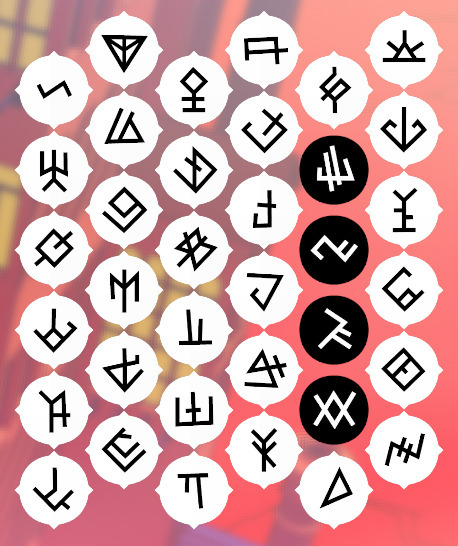
(my dictionary is missing some symbols bc i missed part of the gameplay that would've prompted me to fill them in)
immediately, visually just looks different from the devotee's language, which is super cool! reminiscent of runic alphabets, kind of. i'm assuming that's a creative/artistic decision to indicate the 'toughness' of the warriors or something. not sure if the game developers would've put thought into this, but i also wonder if this is a representation of the materials that those people would've written on (w the devotees being more clay/stone based and the warriors being more stone/metal based). unclear!
in the warrior's language, the verbs generally have a diamond shape, though it's not as consistent to identify as the devotee language's line. the people-related words are kinda tall and skinny, with a stick in the middle?? again, the devotee's language was the most pictographically representative of the bunch--the warrior's language is a little less obvious. i interpreted "treasure" and "fortress" as being location-nouns due to their similar triangle shape, but the translation for "treasure" obv doesn't convey that (i originally labeled "treasure" as "treasury"). i also find it interesting that "death" bears so much resemblance to "impure". in my mind, "death" and "impure" are in the same category as the other people-nouns due to the appearance of the characters, but that might just be coincidence. could possibly suggest some cultural beliefs around who or what "death" is tho!
grammatically, this language is also SVO, like the devotee's language and like english. instead of reduplication, we have a plural marker for nouns, which seems to act like an affix (prefix, specifically) rather than a root word. i will say—i'm not a fan of the translation of "impure" and "chosen" and subsequent plurals as "impure ones" and "chosen ones". not a huge deal, but translating them that way makes them seem like adjectives when they're not, especially considering how they translate <plural bottle> as "bottles". just doesn't seem consistent, but it's a v small pet peeve haha. (while writing this, i briefly considered the idea of "impure" and "chosen" as adjectives modifying "one" but we know that's not true—not just bc the game gives us a translation that says "plural" but also it's used with "warrior" and other objects to indicate plurality too. we also know that this language uses prepositive modifiers from sentences like "carry (the) small crate", so "impure" and "chosen" wouldn't be functioning correctly as adjectives anyway, as long as we assume that the language is consistent in this aspect of grammar.)
although this isn't entirely consistent across all of the languages and for all of the words, it seems that there's a trend that function words (as opposed to content words) tend to be visually simpler--this would include things like "up/great" from the devotee language, pronouns, and i'm also going to go ahead and include "not" and "plural" in this category. this isn't an unsurprising trend--i feel like in irl languages, the more grammatical a word/word component is, the simpler/easier to write it tends to be. we find that the plural marker in the warrior, bard, and alchemist languages are all relatively simple, which also makes them easier to identify when encountering them for the first time. i felt like this also makes the warrior's language interesting, in that the words for "small", "big", "bottle", "trolley", "call", and "moon" are also all relatively simple compared to the rest of the words. (i originally identified "small" and "big" as "this" and "that" because of this.) it might indicate something about the importance of these words in the warriors' culture? or i might just be reading too far into it lol.
questions that remain unanswered: - i wonder why "fear" breaks from the other verbs in terms of appearance (with the vertical line making the diamond part smaller) - i'm a bit too tired/impatient to go through the verbs in this language, but i wonder if there's some pattern to their appearance (since some of them look more similar than others)
105 notes
·
View notes
Note
In A Guildsman Goes Forth to War, what can you tell us about fae society? I'm assuming they're monarchies, feudal or absolute? Do they bear any resemblance to Celtic society? Do they practice slavery? What of their gender dynamics? Etc
Great question!
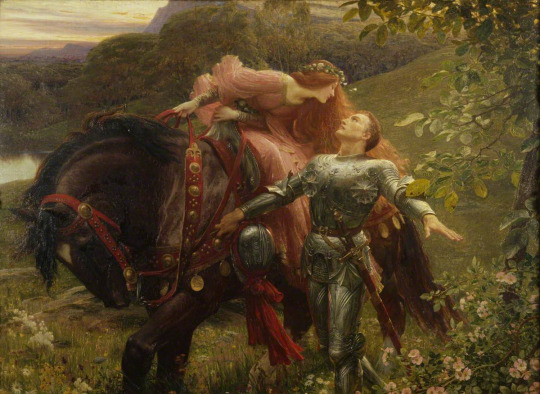
So there's a lot that I'm not going to share with you, because the fae/Fair Folk/etc. are supposed to be a mysterious people who live in their own realm that connects to the human world via thin places in the forests and underhill and deep in the mountains or underground rivers, and humanity doesn't particularly understand them very well despite centuries of intermarriage, as the fae are both very cryptic and contradictory in the information they've shared with their Gentry kin.
Government
As far as humans have been able to glean, the Fae do organize themselves into Courts that seem close enough to European feudal systems that the leading families of Europe can do business with them when it comes to dynastic marriage alliances and diplomatic relations.
That being said, status and power in Faerie society don't seem to be based in land as they are among humans. (In the interests of full disclosure, I'm borrowing some ideas here from the Feywild in D&D.) As far as people have been able to glean from correspondence and diplomatic and cultural interactions, titles are based on elements of nature (the Duke of Hoarfrost, the Viscount of Watermeadows) or from emotions (the Lady of Wistful Rememberance, the Prince of Sorrow), or from ideas and beliefs (the Duchess of the Dark Side of the Moon claims to have once been a handmaiden to the goddess Selene).
Quite a few scholars of geography and history from the leading universities have theories and taxonomies about how Faerie society is organized, but they're all second-hand and can offer only partial explanations and there's absolutely no consensus about what's going on. It does not help that the rare diplomatic missions or marriage parties that go to Faerie from the human world rather than in the other direction tend to report memory issues, such that much of what is recorded owes more to dream logic than accurate observation. Needless to say, this has been a rich vein of material for poets, playwrights, and painters only, and intensely frustrating for academics and statesmen.
Culture
Faerie culture is highly localized in accordance with regional folklore and mythology, although scholars disagree whether human folklore is a record of pre-historical encounters with Faerie, or whether the Fae pattern themselves after the human cultures they interact with.
So for example, the Fae of Éire, Alba, Anglia, and northern Gallia seem to correspond to Gaelic and Brythonic literature, Arthuriana, and the Matters of Britain and France. In the Sacrum Imperium and the Danelaw, however, the dominant Fae cultures are distinctively Germanic and Scandinavian - whether that's the Rheintöchter of the Rhineland and Palatinate, or the dvergr who predominate in Bavaria and the Hapsburg lands or the trollkind and various álfar in the land of the Northmen. In much of southern Europe around the Mediterranean, one is much more likely to encounter Faerie peoples recognizable to students of Greek and Roman mythology: many Gentry from the Lega or the western half of the Rhōmaîoi-Rashidun Federation claim descent from oreads, naiads, nereids, satyrs and other bloodlines.
Human scholars are particularly confused by the fact that all of these different peoples all call one another "cousin," no matter whether they belong to the more humanoid elfkind or the distinctly non-human trollfolk or even the potentially fictional or extinct dragons.
Class and Slavery
As already suggested, Faerie society seems to have some sort of a hierarchy, but it does not seem to be one based in the inheritance of land passed down from generation to generation. Rather, as far as humans can tell, status seems to be associated with proximity to or control of or possession of or identification with magical power from various sources.
What does seem to be the case is that those with more power can command those with less, and Faerie embassies ubiquitously feature both vips with titles and what appear to their servants, but there is no consistency on which kinds of fae serve and which rule. Human visitors and diplomats are very unsure whether this consistutes a caste system or clientilism, because the Fae themselves speak in rather vague terms about "obligations" and "debts" and "true names."
Gender
Again, humans have a rather hard time understanding Faerie gender norms - and are rather unsure whether various Fae kinds have genders and how many they have. What is known is that, among what passes for royalty and nobility in Faerieland, there is a tendency for the female to be announced first - correspondence often arrives in the form of "Queen Titania and King Oberon" or "The Baroness and Baron"- which suggests a slight tendency to the matriarchal, but that is mere supposition. Human cultural conservatives both within and without the Church do grumble about the "immodest" and "amazonian" habits of Faerie women when they comport themselves in their visits to human society or in their Gentry marriages, but they make sure to do so under their breath.
38 notes
·
View notes
Note
i think fred is funny in drag because he’s not wearing drag to make fun of women in general, he’s just in costume to make a silly character that happens to be a woman
You know, I think there is something to this. Personally, I'm a little more neutral on cross dressing for comedy in general. I understand the general arguments of "the comedy of men dressing as women is assumed inherent because 1. women are worth degrading 2. femininity is inherently humiliating and ridiculous" and yadda yadda a host of other arguments. I just don't like writing off ~gender bending~ art immediately, I find that's a fairly conservative knee jerk reaction. I'd rather take each piece of media as it is, examine it from multiple contexts, etc. So if there's cross dressing in a comedy, I think there's a difference between putting a buff man in a ridiculously tiny dress to go "tee-hee, shoes!!!" as the inherent joke, and a male actor being a female character or a female actor being a male character.
I think the most successful cross dressing is when the design gives only the vaguest suggestion of the other sex, but the general facial features of the person aren't obscured too much. This is successful, I think in part, because the differences between men and women are fewer than most people are comfortable with. Obviously, there are some very big significant differences, but also there are spectrum differences that are only more apparent to us because we culturally highlight them. Which is just a complicated way of saying a man that looks like a man can also have big doe eyes, and a woman that looks like a woman can have a hard cut jaw...or w/e. there can be a billion examples.
35 notes
·
View notes
Text
Ya know SMTIV, what this is actually perfect. Remember what I said about how Nasu could never be asked to show even a modicum of respect to Tezctalipoca as a figure, and how the "Tezcatlipoca" in FGO in no way has the spirit of their alleged origins?
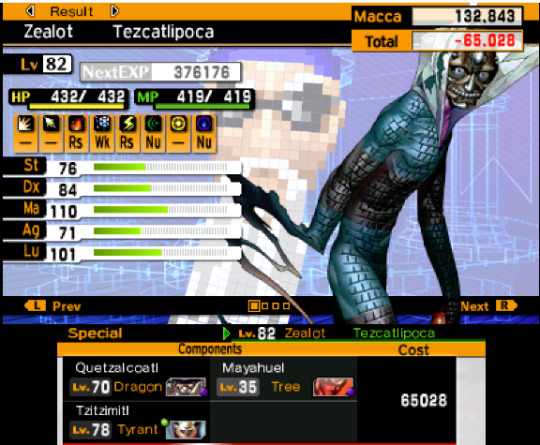
Well I don't care much for this design either.
In fact I don't like SMT's (or more specifically Soejima's, who is still very much talented as I'll make clear) Tezcatlipoca design at all. I personally find it ugly and having an aesthetic I'm not that fond of, particularly the sort of "Bigfoot sighting" pose he has going on.
But i don't hate it, and I certainly am not morally opposed to it like FGO's, because even if I personally dislike it, ya know what it is? It's still undeniably based on Tezcatlipoca and keeps that spirit in several ways evident through design alone, let alone the way he's implemented into the game itself. It's a design that feels like it respects the culture it's taking its name from, and I'd much rather it do that than have an aesthetic I'm more fond of but lack any representation of its source material.
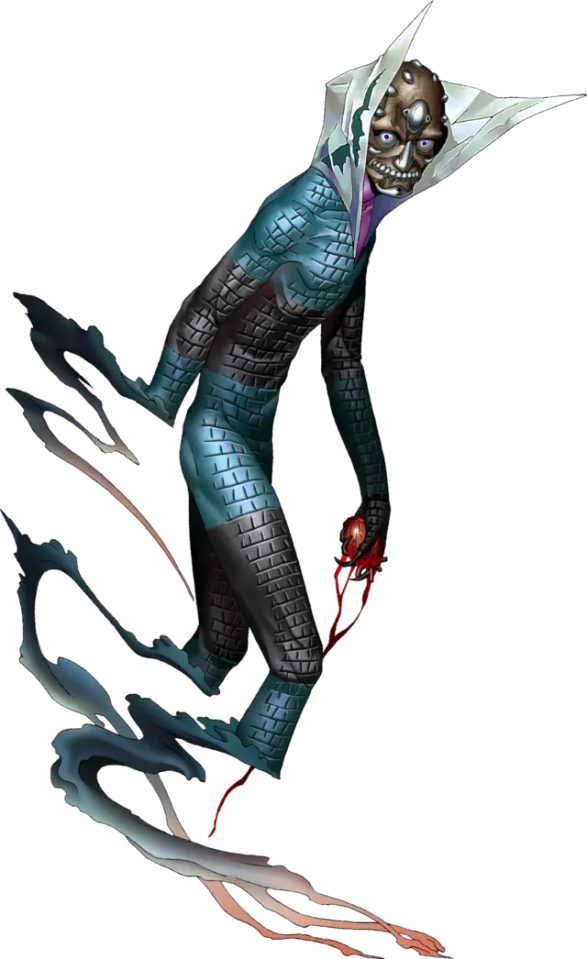
Just on a surface level you can see the ways in which this is meant to be Tez.
Holding a human heart with one arm, which were sacrificed to him in Aztec rituals
His body is visibly black and navy blue and made of a stony substance, which is a reference to the association many aztec gods but especially Tez had with obsidian rock, and the main symbol of Tez is an obsidian mirror.
Despite this, his other arm and legs are dissolving into smoke at the end, which is a reference to his main title of Smoking Mirror.
His skull-like head is pretty clearly meant to invokes a Calavera, which even if you didnt know the name of you've probably seen if you've ever witnessed a Day of the Dead festival.
That's all just the surface level stuff. There's plenty more if you know to look for it.
While one of his arms is visible, neither of his legs are, which fits with how Tezcatlipoca lost at least one of his legs to the giant crocodile Cipactli when the world was created
While blue isn't the primary color Tez is associated with, the use of teal/navy blue specifically fits with how he was often depicted with an almost interchangeable combination of grey-ish dark blue and black.
Despite my "bigfoot posture" remark, it very much fits Tezcatlipoca, whose spirit animal was the Jaguar, an animal well known for stalking and ambushing prey (rather than chasing it down like African big cats are known to do).
the way the smoke curls around as if forming an extremely distorted prosthetic foot matches how Tez's missing foot is specifically portrayed in the Codex Yohualli Ehécatl (AKA, the source of the image on Tez's wikipedia page), particularly with how the coloring shifts to orange-yellow at the end.
The most shaky but still worth noting claim: The emphasis on the blood flowing from the heart, combined with the gems embedded in Tez's head, could even be a reference to the Ezpitzal, which while looking very different in mesoamerican art still is no doubt connected, given how the key traits are flowing blood and embedding precious stone in [a crown above] the head.
So....do I like this design? No, personally, not really. I'm way too much of an edgelord to settle for such a toned down and subtle design for a figure like Tezcatlipoca.
Do I respect this design? Absolutely, zero question. It's the kind of design you could never get if they didn't at least TRY to research Tezcatlipoca, let alone do so well (at least i can only assume well based on the result). That's the difference between this design and "some white guy from the GAP who likes guns". You can tell they gave a shit, not just in general but specifically in regards to the culture being referenced.
(Oh, and also unlike FGO Tezcatlipoca, I don't need to be told "someone famous drew it" to be able to figure out someone talented drew it. )
#none of this even gets into mechanics like how you combine Quetz with a Heart and an Aztec god of night to get Tez#or how he has extremely high magic and mana as a figure known for their wisdom#or how he's a Zealot which represents how he is dark but not evil and has been harmed for his beliefs/actions in his own myth#hence how this design emphasizes his missing limb(s) much more than his original design. Pre-Strange Journey he#had a different much more antagonistic portrayal so he was seen as a mainstay of the Vile race#which fits how Tezcatlipoca is often misconstrued as a pure evil being rather than the Yin to Quetz's Yang#fgo#shin megami tensei#smt iv#peak character design#i may not personally like it#but it's absolutely good character design#fate grand order#fgo tezcatlipoca#tezcatlipoca#mythology#aztec mythology#long post#nasu is a hack#dont play gachas kids#character analysis
82 notes
·
View notes
Note
hihelo, raau related things
i really like how you draw and write stuff with hybrid stuff in mind, especially avians, and was wondering if you could infodump a bit? stuff like instincts and little things like sounds they make stuff
sorry if this is too vague, i dont really have any specific questions, im just curious about it all :D
oh actually i do have one, where do you usually learn all this stuff from?
Thank you! I'll try to answer a few things
As far as major ones I don't think it's much all that differently than the general fanon you find in fics, the only real difference is that since I'm drawing, I have to figure out what it actually would look like/go with a more visual option. (For example a lot of people make blazeborn, or at least tango, purr, and that's not something you can depict in a silent, still image easily.) The only other difference is that raau is set on a single, modern world and so ones like blazeborn aren't from the nether or void and these species have a linear history that impacts the world's development.
Avians:
Avians make all sorts of birb noises when theyre emotional of course, and they need preening. Maybe pre apocalypse they were picky about what to do with their feathers, but in the apocalypse they could be a potential resource so at least Jimym and Grian save them.
The main difference is I prefer to interpret things like feather-gifts and nests as familial things. A lot of these behaviours are based on bird behaviours but I like to imagine they don't just... act like birds. These are their culture and traditions not JUST instincts.
So, like, it's instinctive and better for their body if they sleep in a nest rather than a bed, but that nest replaces beds and- while their partner usually is the other person sleeping in that bed, it's more of a big like... sleepover space for everyone in their flock, not a romantic thing. It doesn't really say anything about their relationship other than they're comfortable sleeping around them, in their nest which is their safe place. Nests I also designed based on enclosed nests like weavers, or a bird house, or cavity nests like owls. I think it just made it more distinctly a nest rather than a round dipping bed, especially once all the blankets and pillows are placed. So they'll put up veils and curtains and basically make a fort but permanent. It's the focal point of their homes, basically.
The ranchers' has to be comfortable and accessible to Tango as well but I imagine most avian families straight up make a whole room for just the nest and no stairs. I feel like avians are really bad about making accessible architecture. In raau I imagine their world a lot liek ours but I also image it without a housing crisis or lots of generic homes due to the needs of the various species usually meaning a LOT of people build their own homes.
Feather earrings I also imagine as a nuclear family thing between avians only, for the inner flock so to speak. It's sort of like a house flag, 'these are my siblings/parents/children' type thing. If that involves a non avian a non-feather item might be included, like a blazerod or scale. It's mostly a signal to other avians, though (and pretty). Like if Jimmy removed Grian's feather from his earring that would be A Statement. there isn't really any ritual involved with giving them, either, it's just expected. Outer flock aka friends, extended family, and unmarried partners aren't really involved.
Avians also have a migratory instinct in raau. Though they have specific birds they might resemble I think of them as their own whole species 99% of the time (Jimmy's ability to see sounds being the 1% unique due to their bird thing). In the case of the modern avians this usually takes the form of frequent travelling or nomadic lifestyles and taking up temporary/seasonal work.
A lot of cowboys were avians, and probably a lot of those world travel blogs were run by avians. Probably a lot of jobs discriminate against avians assuming they'll want a bunch of vacation time or up and quit like how women with families are treated. Jimmy doesn't travel much as he's more of a ground-bird and the farms he worked on were plenty spacious, but even he gets antsy if he's stuck at the ranch too long and usually is the one to go out scavenging with Grian or visiting the hospital.
And finally obviously their wings are very important to them. It's their everything, even if they're like Jimmy and don't fly too much. It's their main survival strategy so being grounded makes them very anxious and stressed. Even Jimmy who hasn't been able to fly-fly for several years in raau still instinctively tries to launch himself in the air when startled or attacking. Clipping or damaging them is the worst thing imaginable to them so they treat them with the utmost care.
It's how they display being healthy and well-groomed to others, like a nice clean haircut, and they puff up and flatten largely in the same displays and posturing as your average bird as far as communicating emotions goes.
Blazeborn:
I don't have nearly as much for blazeborn since there's only one of them, but I think their instincts are very cat-like as far as behaviour. They are completely in control of their ability to burn or produce fire, like rapidash. They get VERY firey and turn into a fire hedgehog when enraged, but if they know who it is then even then they won't burn someone they don't want to burn. It's more like a threat display, but of course whoever it's directed at will usually be burnt.
They tend to use their tail to communicate, and they use it like cats use purring; when they're comfortable or are trying to comfort themselves they wrap it around things. Otherwise it communicates much the same way as a cat's tail.
In raau their flame colour is an indication of their internal temperature regulation. Blue/white is extra hot and red is cooled down, yellow is in-between, average temp. Since it's also hair it can't be put out, but it does crackle and steam when wet. They do NOT do well in cold weather, obviously, nor weather that heavily fluctuates.
A lot of traditional blazeborn homes are in deserts or underground, and modern blazeborn-friendly homes ALWAYS have the main part of the house as a basement suit type deal with plenty of climate control, where it's much easier to regulate temperatures to warm and dry.
They have an attraction to metals, though tango's a little freak who likes iron more than gold. Them and pig-hybrids are probably the reason for the gold standard. Probably a lot of traditions involve metalworking and the like. It's instinctive to be attracted to metals, but the working of them into things is cultural.
Also in raau specifically blazerods are a whole effort and ordeal to produce. it's basically blazeborn cartilage.
Others:
raau doesn't have magic, so races defined by their magical capabilities are no around, like vex or witches.
Medusas like Cleo basically have multiple brains like an octopus and so require a lot of calories and nutrition. They're also immune to snake venom and can develop immunity to other toxins, thus they're actually very reliable for the development of anti-venoms and vaccines.
Scott's an elf but it doesn't mean much other than he's tall and has slightly pointy ears. They have a lot of cultural stuff, but Scott's not a very traditional guy.
Fauns have a lot of prey-instincts, so they tend to have very strong fight or flight instincts at the smallest thing. They're also a bit odd to most people. They're social but in a shield sort of way rather than a cooperative sort of way, so their moral compass can seem off. If I let myself I would make so much faun lore so I intentionally stopped myself there. The only other thing is their horns/antlers shed annually and so they treat them almost like how others treat family picture books or height charts.
Tiny Tom is both a voidwalker and a cow faun hybrid. As far as voidwalkers go they hate being looked in the eye and are similar to avians with a migratory instinct.
Merfolk like Lizzie need to live in humid climates if they are going to live out of the water, and have very strong schooling instincts. They'll often have very large families and friend groups. Home pools were unsurprisingly something that first appeared in land-living merfolk homes. It's an absolute necessity, as well as a large bathroom or full on bathhouse. (they separate the bathroom and the toilet as separate rooms)
And that's about all the things I've thought about. It seems like a lot when actually typed out and explained, but a lot of it's mostly common fanon maybe adjusted here and there for the setting of raau.
96 notes
·
View notes
Text
Viren's Death and Transformative Justice
Trigger warning: there will be mentions of csa and rape but nothing graphic
It's time to talk politics! When it comes to Viren's finale, I'm honestly disappointed (but not surprised) that the writers chose a cop-out in a form of "heroic death" rather than to show a person who's hurt others put effort into becoming better and atoning for his crimes. From a political perspective, this is related to my stance against carceral (and capital) punishment and in favor of prison abolition.
Viren would either rot in a cell or die, instead of getting a chance to heal, which is a regressive and reactionary way of thinking, completely in line with the right wing ideology but which has been so normalized in our culture that liberals and many leftists don't question it. The general norm is thus - if someone does a crime, they should go to prison, regardless of how the prison will break them and make them worse. And that's not counting all the people who want criminals to be killed.
To talk about my anti punitive justice stance, I would like to take a darker turn and talk about a very serious type of crime. There's this amazing video by a youtuber Kathrin where she talks about prison abolition and how the carceral system hurts people (including victims of crime!) more than it helps them. And she uses her own experience as s CSA survivor as a lens through which she looks at this sensitive topic.
youtube
The video is 37 minutes long and features a heavy topic so I understand if you don't want to watch it but I really really recommend you do, because it will challenge your preconceptions about justice and the carceral system.
However, if you really don't have the time/desire/spoons for it, here are the main points:
the carceral system should be abolished
it should be replaced by transformative justice which focuses on taking care of victims above punishing the perpetrators, as well as crime prevention by understanding the root causes of crime.
Okay, you might ask - so what does this have to do with Viren, who chose to die? Well, in addition to the philosophy that he had to die or didn't deserve mercy being directly linked to the current system, there's also this section towards the end of the video (24:50) where Kathrin discusses what transformative justice would look like for her. Emphasis on the last part, as different victims would want different things:
"For me, transformative justice would look like sitting sitting with my abuser in a circle of care with people all around us, flanking us, attending to our healing, becoming our surrogate family as they facilitate our conversation."
How powerful is that? And she's talking about someone who raped her as a child. Viren is not even close to the monster Kathrin is talking about.
So let's talk Soren and Viren. I've seen plenty of people say they hate Viren for what he did to Soren (which is absolutely valid!) and I assume they care about Soren's well being. So tell me, which sounds better for Soren - having his abusive father die on him, leaving him with a gaping wound and a ton of unanswered questions or getting to sit with him, surrounded by people he trusts and who can support him and having an extension of the conversation they almost had in the dungeon, where he gets to heal together with his father? He doesn't have to forgive Viren, but having that might provide him closure and help him contextualize certain things.
And don't get me wrong - there are parts in the show that I think are excellent in terms of mutual healing - Viren acknowledging what he'd done to Soren and taking full responsibility for it was very powerful. But it lost its momentum with Viren's death.
One of the central themes in TDP is ending the cycles of violence and yeah, the show does focus on it, I'm not saying it doesn't. But it keeps the entire political aspect of it firmly within the status quo, choosing what I would call a morally cowardly approach to this. And I'm sorry for using such strong language, I really am, but I think political centrism truly is a cowardly approach to politics. And politics in the show matter because the writers chose to make it matter.
Ultimately, whether you enjoyed the end of Viren's arc or not is up to you. It will mostly depend on how you read Viren's character throughout the show. I just genuinely find that ending emotionally unsatisfying and the perpetuation of the punitive justice mindset is one of the reasons, whether the writers intended it or not.
12 notes
·
View notes
Note
Hey mystery! Time to flex the big brain of yours with a science question. I’m sure that you’re familiar with the recent change in ages for Sonic and co. All of their ages were removed. So my question to you is how old would Sonic and his friends be since he’s now meant to be seen as TEENAGER?
Hello, my dear!❤️✨
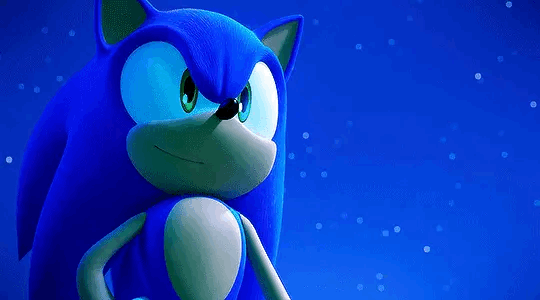
This is a very interesting question. And I say that because it's a very... controversial (?) topic in the fandom at the moment. For those of you who are not familiar with the matter, the ages for many characters on their Sonic Channel bios were removed back in October (Bevan, 2022). Even characters like Vector and Rouge, who have notoriously been viewed as adults in canon, do not have a defined age anymore. This was a decision made by SEGA of Japan (SoJ) to keep the characters ambiguous with ages. For some characters, we can still infer that they’re strictly teenagers, like Sonic (Game Informer, 2022. 05:00 to 05:08). Maybe a little bit older, but not by much. It could range between 13-years-old to 19-years-old. It’s really up for interpretation with some fans, especially since the actors for the Sonic series are focusing on deeper voices.
Disclaimer:
I am more than happy to answer this question, but I’m afraid that I’m very limited on how I can answer this. Ages displayed throughout the series has always been a fickle thing. And that’s okay! I’m assuming that this ask is geared towards Game!Sonic rather than Sonic Wachowski, since his canonical age is 13-going-on-14 (Fowler, 2020). If this ask is geared towards me debunking the "age argument," then you might get a different answer. That, and I'm not gonna buy into the B.S. that comes from it.
The problem here is that I'm being asked to apply scientific logic to a fictional character. That's all well and good, but I'm limited in resources. That, and I'm making assumptions on how physiological traits work with an anthropomorphic animal. I'm basing my conclusions on human physiology. While this may seem logical for the ask, I don’t necessarily know how “fair." This would be considered more of a headcanon rather than a scientific explanation to your question. If there was more of an understanding of the Sonic characters’ anatomy, then I would be comfortable with giving a strong answer. They best that I can supply is a hypothetical scenario that might supply a content answer. “Content” meaning that’s it’s fine, but gives me enough wriggle room to debunk/empathize in the future.
I must also stress that an average does not mean the "perfect model." No singular person is the same. There is no such thing as normal. When I say that something is of average comparison, I'm translating it to a general starting point. I need a base to go on in order to build on top of my reasoning and data.
References:
For this ask, I will be looking at cranial structures and comparing them to both human, anthropomorphic animals (Sonic). Data that is generated to answer this ask comes from existing games, interviews with game developers, and anthropological research.
The methodology and techniques that I’ll be referencing comes from “Bare Bones: A Survey of Forensic Anthropology” by, Michael Warren et al. (2012). This is an excellent book that provides techniques and disciplines to criminologists, anthropologists, and physicians. The Smithsonian: National Museum of Natural History provides a sample of "Forensic Anthropology 101" in their free educational service HERE. I’ll also be referencing different case studies found in cultural anthropology journals. Hyperlinks will be attached in the in-text citations for view.
Methods:
I can answer this question using basic forensic techniques. There are a few different ways to determine an individual’s age when examining skeletal anatomy:
Cranial anatomy
The pelvic girdle (pelvis)
Femur
Mandible
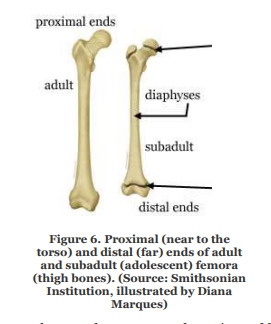
Most archaeologists and forensic anthropologists will answer that the pelvic girdle is the best indicator for identifying an individual's age. The pelvis girdle consists of three main bones: hip bone (ilium, ischium, pubis), sacrum and the coccyx. With this, we look at the level of maturity of bone growth to make an educated guess. This can be identified by the bone's state of fusion. Depending on the identification of the individual, the pubis may fuse or grow robust. If the femur is present with the pelvis girdle, then the collected data becomes stronger. The femur is measured in height from the neck to the head, then the shaft alone to provide an idea of one's stature. All of these together create a plausible stature for one's growth and maturity.

The mandible is touch-and-go. I’ve shared in the past that teeth can provide an idea of an individual’s weight, social/economic status, stature, left/right dominance, and types of bite when chewing food. The state in which teeth grow in can give us an indication of age. This is just as good as observing one's age with a pelvis girdle. If not, maybe a bit better! However, this only works if there's a certain amount of teeth present and a record of growth is present. We look at an individual’s molars and premolars in order to determine a rough estimate in age. On average, wisdom teeth come in between the ages of 17 to 25 (Renton et al., 2016). Some are late bloomers, others are early birds. X-Rays can help us identify where the teeth are currently and provide a projection of when they'll appear. As long as there is recorded data on how teeth grow and when they come in, it's easy to determine how old someone is.
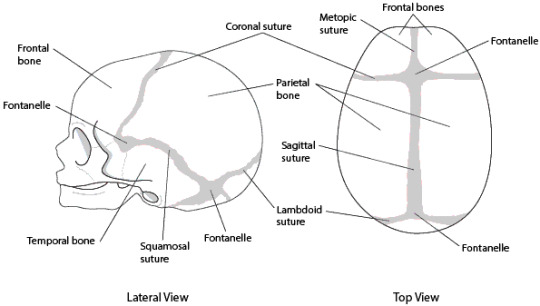
Finally, we have the calvaria. For the sake of sanity, I will be referring to this as the “cranial cap." This is the top crown of the head with four major bones that shapes the skull. These bones feature the frontal bone, two parietal bones, and one occipital bone. Along the top of the cranial cap we see these squiggles that separate the bones. These are called “sutures.” Sutures can be defined or barely visible due to the state of mend. Through maturity, these bones mend together to create one bone rather than four. These are not signs of damage done to the head, these are signs that show the state in which a child is growing (Warren et Al., 2012). Sutures are a result of an infant's cranial cap fusing together after being birthed. To put simply; the less defined they are, the older that one supposedly is.
OBSERVATION:
As explained in the “Methods,” section, the cranial cap and mandible appear to be a more logical choice when determining Sonic’s age. I am fortunate for the small crumbs given to me from Sonic CD (1994) and Sonic Unleashed (2008). Both of these provide a good picture of Sonic’s biological estimation on age range. I will not be referring to Evan Stanley’s interpretation of his skull. I do not feel that this is necessary, nor canon. This is Ms. Stanley’s interpretation of Sonic anatomy and fan art.
Mandible
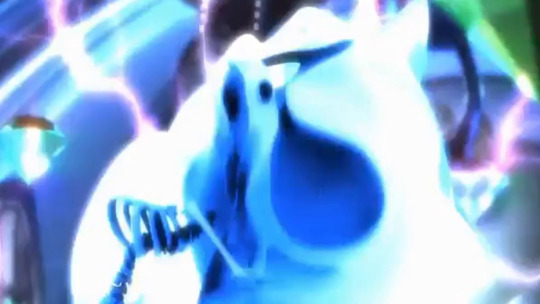
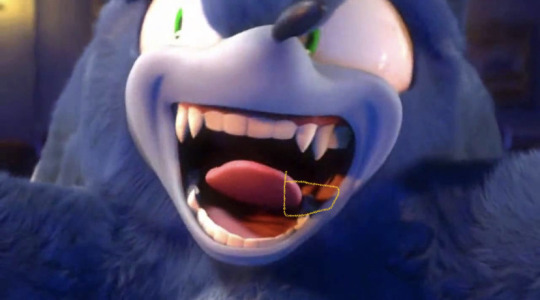
Right before it's initial release, Sonic Unleashed's opening cinematic was meant to have a darker tone. Initially, the beta version of the scene depicted Sonic being electrocuted in his super form as he's infused with Dark Gaia energy. This scene was also meant to show his skeleton during the painful transformation. Screenshots of the scene are available online. One particular shot shows enough of Sonic's mandible to identify canine, incisor, premolars, and molars. The image above shows that at least ONE wisdom tooth (third molar) is present. Other signs of third molars is not visible due to angle of shot.
In the animated short titled "Night of the Werehog," we're given a good shot of Sonic opening his mouth and showing his fangs. Way in back are three molars (Image has been brightened and highlighted for view). Since one confirmed wisdom tooth is present in the shot, we could infer that Sonic is at least 17-years-old. Not fifteen. Seventeen is the average age for when we see wisdom teeth begin to grow in.
Cranial anatomy/Cranial Cap

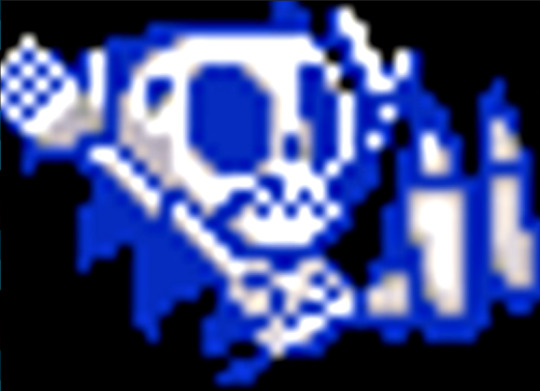
In Sonic CD (1993), there is a particular scene where Sonic is electrocuted once again. [Fun Fact: one would not be able to see Sonic's skeleton if electrocuted, you'd see his nervous system instead.] Once again, players are able to see Sonic's entire skeletal system. The problem with this example is that it's pixelated art. Pixel art can range from being detailed works of art, or simplified icons that have symbolic meaning. The skeletal anatomy that we see of Sonic in the CD title is not enough for me to draw a conclusion on how old he is. It's merely a representation of a shock taking place.
For a better representation of a cranial cap, we should refer to the beta version of Sonic Unleashed once more. Sutures on Sonic's skull are a tad harder to make out in the image due to how saturated the scene is. A wonderful example of seeing Sonic's cranial suture can be seen at a side profile. The one closes to the sphenoid bone (eye socket) is a cranial suture. Again, this one is up for debate since the quality of the photo is poor. For the sake of sanity, we'll claim that this is a suture.
Examining the suture, we see that it's less defined. This does not mean that the sutures disappear completely. As we grow older, the bone fuses. If Sonic were younger, then the sutures would be more defined. Here, they've fused quite finely. This leads me to believe that he is out of the child phase (1yr to 12yrs) and into Adolescence (13yrs to 17yrs).
Femur & Pelvic Girdle/Pelvis
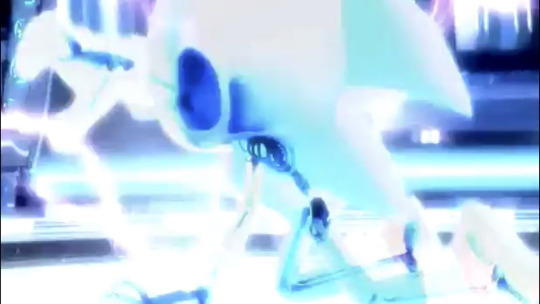
Generally, there's a model that can be used to display what a mature individual looks like compared to an adolescent when observing a pelvis girdle. Here, it's a bit harder for me to make an assumption because there's a lacking model of what adults and adolescents look like for anthropomorphic animals. This is a query that I've faced when trying to examine Sonic's skeletal anatomy. Of course, measuring a femur and weighing the density of bone could provide some insight on Sonic's estimated age (Shipman, 2018).
In a real world, that would require lots of money and an actual subject that is the equivalent to Sonic's height and weight (canonically, Sonic is 100cm tall and weighs 35kg). You'd then have to figure how much the bone density changes when someone stands up, sits down, lies down, and so forth. Plus, I don't know Sonic's level of body fat to even begin doing a simple calculation. It's a bit of a headache the more that this is tackled upon. That is a lot of data to collect for a talking blue hedgehog.
Measurements of the femur to the pelvis are fine and dandy, but the data is inconclusive. A simple measurement could be off by a single year or three. Once more, it's kind of hard to capture a crisp picture of the pelvis girdle and femur. I feel that gathering data from this perspective is inconclusive.
Discussion:
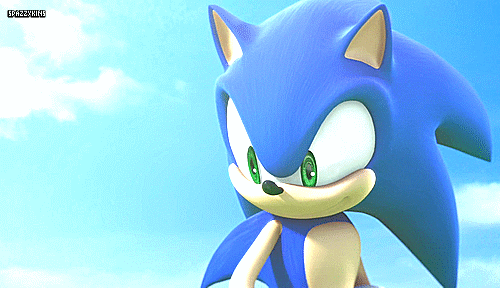
I must stress that this isn’t meant to be as in-depth or taken seriously. I must also stress that many social groups around the world have different approaches and cultural definitions to what it means to be a teenager. This is a common topic that I try to educate people about when it comes to cultural norms and social practices. Most western cultures consider that teenagers starting at 13yrs of age and ending at 17yrs of age before becoming a legal adult at 18yrs. Some western cultures even extend the age gap to 13yrs to 19yrs. Cultural and social teachings of how we define what is and isn’t a teenager could easily be defined as “adolescence.” We refer to this as adolescence, it allows us to have an extended age gap of 13yrs to 19yrs (Ember et Al., 2017). It all narrows down to how these practices and beliefs are taught within one’s community.
Some fans headcanon Sonic and his friends are growing older, others younger… or even stick with the Western interpretation of him being 15-years-old. Sonic's age has always been ambiguous, meaning that it's not narrowed down to a specific number. The query that I've faced is that there is a lack of official material that displays this easily. The information that I have shared in this post works on a plausible theory that he's older than 15. However, gaming manuals have almost always made it a point hat hes 15/16 (Sonic Heroes Game Manual, 2003). The point now is that he's a teenager. He will always be viewed as a teenager in this canon. To me, Game!Sonic is definitely older. He clearly shows characteristics of being an older version of himself (the strongest supporting evidence here being his teeth), but still within the range of being classified as a "teenager."
My goal here is to not enforce one way of thinking. The most that I can do is supply the data and leave you, the reader, to make your own conclusions. I hope that this answers your question, my dear.
#I’ve been… so scared to answer this. I am very conscious of this being a hot/controversial topic as of late. Please don’t cancel me👉���👈#mystery anon#off topic#I am an anthropologist#I am an archaeologist#sonic#sonic the hedgehog#sonic movie#sonic unleashed#trigger warning: skull#tw: skull#tw skull
61 notes
·
View notes
Note
I've got kind of a big dilemma here. I've always assumed i was sapio and just strange. I've never liked lying, and I have some weird allergies so my diet's pretty low sodium and we don't have cast iron pans but other than that my life has been pretty "typical", for lack of a better word. But I graduated last year, so my parents were going through baby pictures, and my dad pulled one out I'd never seen before from the day I was born and the baby in the photo was Not Me. Like one thousand percent definitely not me. I mentioned it, and my mom freaked out and told me not to be ridiculous and buried the picture at the bottom of the box. But I know when I'm being lied to, and there is no way that's a picture of me. And the other day I got a box in the mail that smelled like pine sap and lilacs and the ground after it rains, and there was a letter and a stone with a perfectly round hole in it inside. I'm adopted, apparently, and the stone is supposed to help me see hidden things until my eyesight improves. My bio family has invited me to a party on the spring equinox so I can meet them. But I have this sinking feeling that if I go they're not going to let me go back home? I love the parents who raised me and I don't want to leave them, but I do also want to meet my bio family and my "twin" (the baby from the picture who I guess is about my age now?). Do you have any advice for how to set the proper boundaries with my bio family so I can meet them without losing the life I've been raised in?
I'm afraid I don't quite follow your thinking here, reader.
Infant substitution is practised in a variety of different cultures on this plane of existence and several others. Without more information about your biological family's background, I am hesitant to make any sweeping proclamations about their specific practices. That said, I see no reason in your letter to assume they are planning a spot of interplanar kidnapping to usher in the equinox.
There are a few tangible signs they might not be being entirely honest about their intentions - if they are insisting you wear specific clothing and jewellery for the event (undyed, natural fibres, for example, or a crown of columbine and foxglove) or if they are at all cagey about the details of any rituals and ceremonies involved in the celebration, for example.
But without these red flags, I'm afraid you may be falling victim to nothing more or less than a rather pernicious strain of anti-liminal scaremongering.
By all means, ask your relatives about any etiquette you might need to be aware of, and whether the event will include a formal refutation of obligatory reciprocity. These perfectly ordinary things to take into account before travelling to another realm. Indeed, if your biological family shows any reluctance in answering, that might be another red flag.
Beyond these formalities, though, you run the risk of causing serious offence if you show up at the equinox celebrations with pockets full of salt and breadcrumbs, refusing to eat or drink and festooned in protective amulets.
With all due kindness and respect, I urge you to consider where these ideas and anxieties have their roots. Regardless of your true genus, you have been raised in a profoundly sapio-centric society. We are none of us immune to the prejudices and preconceptions taught to us by the society we're steeped in.
But we do have a choice about if and how we carry those ideas with us in the future. Take the time to educate yourself on infant substitution in general and, if possible, on your biological family's culture in particular. I think you'll soon find these fears are unfounded.
Finally, please, don't be too hard on yourself for internalising these misconceptions. We can't help the world we were raised in or the assumptions it taught us. But we do have the power to unlearn those harmful patterns of thought, and to work together to create a better present.
[For more creaturely advice, check out Monstrous Agonies on your podcast platform of choice, or visit monstrousproductions.org for more info]
26 notes
·
View notes
Text
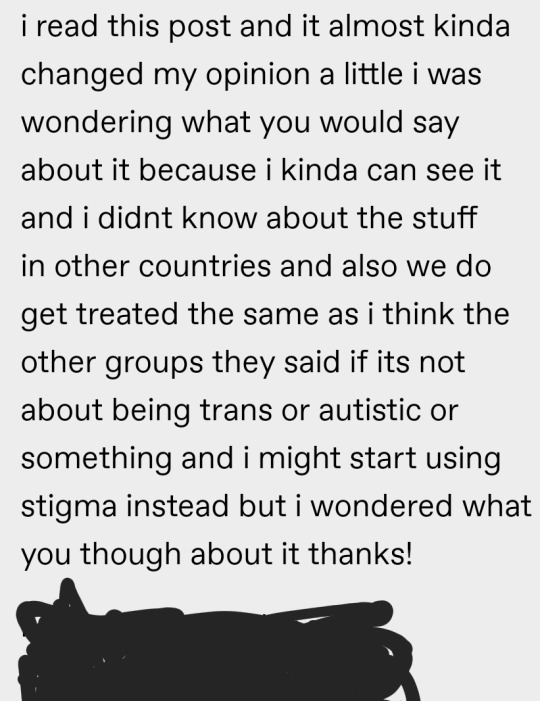
I cut out the link since I'm blocked by the account. Tumblr doesn't give clear instructions on what to do if you get an anon ask about a blog that has you blocked, but this seems a safe practice to protect the individual in question.
I would also ask people not send me links to this particular blog in the future.
With that out of the way, non-western society isn't some monolith and treating it as such is itself western-centric.
Maybe there are some places where endogenic plurality is less stigmatized. I might question their conclusion that it's trauma responses being stigmatized as opposed to trauma accusations. Most childhood trauma is from family, and loyalty to family is a higher priority in many cultures than it is in the West. And admitting to being a traumagenic system is usually the same as accusing your family of abusing you which is going to be interpreted as a betrayal of your family.
But while some areas may be more accepting, on the other hand, there are also many non-western countries where people are tortured and killed in exorcisms for what's interpreted as spiritual possession.
Another thing they try to do is dismiss abuse over pluralphobia as simply existing at an intersection of other oppressed identities. I assume they're talking about how, for example, laws discriminating against people for identifying having a different gender than their AGAB just happen to oppress plurals too because of that intersection.
I find this intersection theory to be an interesting perspective from the SAME EXACT SYSTEM who months ago suggested that I came too close to "claiming transphobia" by pointing out a certain theme in an ask.
Here's a refresher for those who missed it:
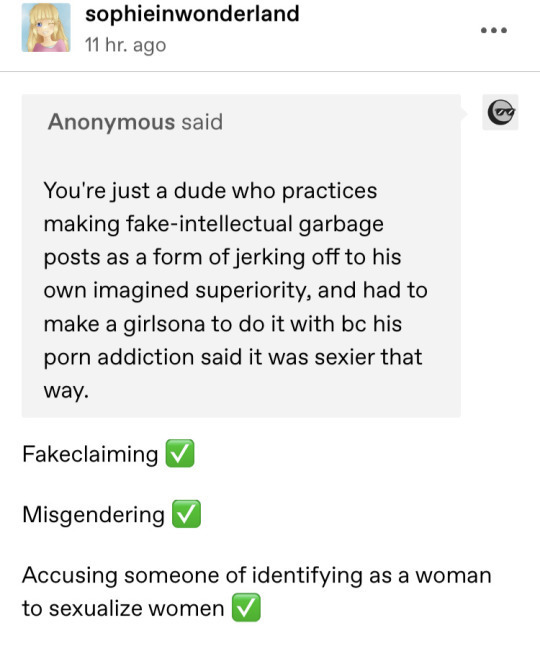
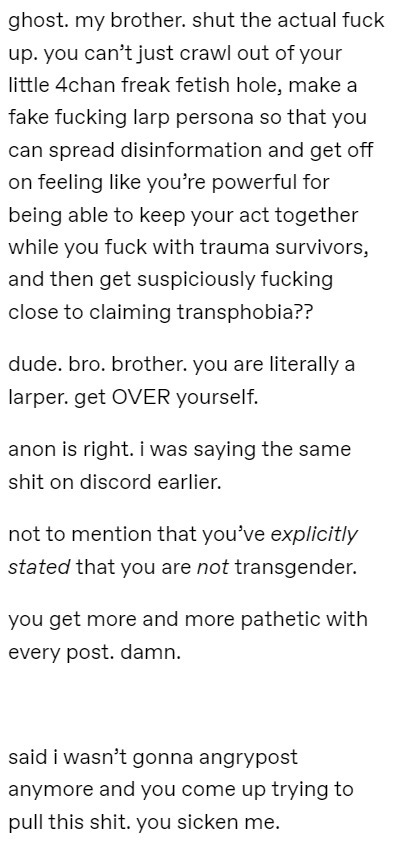

Yes, that's them.
The same exact system you linked.
The admin to The Survivor's Network.
This particular user, and their awful little bullying Hellhole of a server, has repeatedly tried to downplay and dismiss discrimination against endogenic systems, and systems in general.
They're the absolute worst.
I feel it's important to understand where these arguments are coming from and what their goal is. Anti-endos with a long history of attacking endogenic systems want to erase or minimize the harm they've done or are doing. To acknowledge all systems as being oppressed for being systems, rather than ONLY traumagenic systems due to general ableism, would require admitting that they were the bad guys all along.
But let's put get back to the topic at hand.
The position that plurals aren't institutionally oppressed is nonsense
The most stigmatized parts of DID isn't the trauma flashbacks or the chronic depression or even the lapses in memory. It is, and always has been, the multiplicity. There's a reason every horror movie about DID will focus on that and double down on the evil alter trope.
The evil alter trope is an evolution of stories about people being possessed, being werewolves, or being replaced by Fae or malevolent Fox spirits.
People with DID aren't stereotyped as murderers because they're traumatized, but because they're plural. In fact, one common complaint about DID representation you see all the time is that it tends to erase every other symptom and comorbid disorder.
The multiplicity is always treated as the defining problem with systems in society.
This is why forced fusion from therapists used to be pushed so hard, and has been so harmful to systems with DID over the years.
But DID systems aren't the only victims of this form of medical pluralphobia, even in disordered spaces.
The same is true of other plural and plural adjacent disorders and experiences. It's why Dr. Romme of the Hearing Voices Network has compared forcing voice hearers to get rid of their voices to be akin to conversion therapy to "cure" homosexulaity.
And yes, this is happening to non-disordered systems. Just a few months ago, a tulpamancer talked about their own experiences of being forced on antipsychotic medication to get rid of their tulpa.

When the user tried explaining more to their psychiatrist, the psychiatrist actually increased their medication.
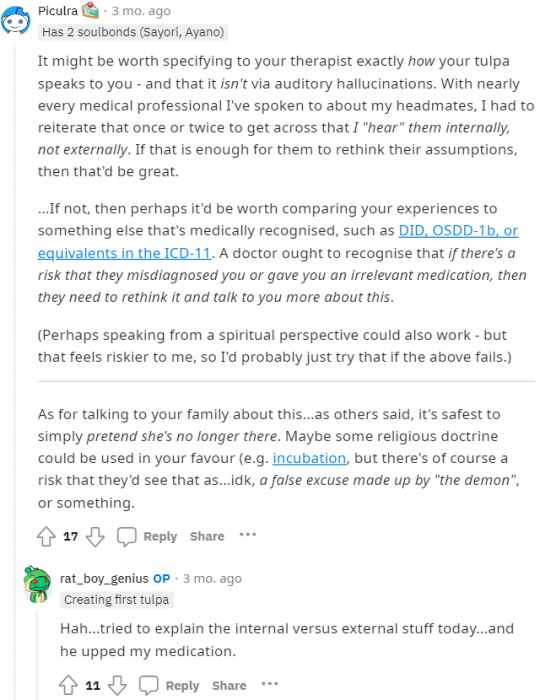
This form of psychiatric abuse goes beyond simple social stigma.
And this conversion therapy approach to plurality is something that many plurals and voice-hearers have had to deal with for decades. And itself is an evolution of the exorcisms people associated with spiritual plurality have been subjected to for centuries.
I should also mention Cambriancrew has talked about medical staff over the past couple years reporting policies of denying care specifically to systems.
Plurals have never been named as a collective group until the last 30 years.
But we've ALWAYS faced this type of widespread societal oppression for our plurality.
From friends and family ostracizing and rejecting us or even targeting us for hate from others.
From psychiatrists abusing us or trying to cure us.
From religious institutions engaging in literal torture to get rid of perceived demons.
And from a society at large that repeatedly denies our very existence and our personhood.
#syscourse#psych critical#psychiatry#pro endo#pro endogenic#endogenic#multiplicity#systems#ableism#disability rights#pluralphobia#mental health#misgendering#neurodivergent#neurodiversity#actually neurodiverse#sanism#stigma#discrimination#oppression
57 notes
·
View notes
Note
exactly! if it's an art form on the same level as published books, TV, movies, etc. it would have to be subject to the same scrutiny too. either it's important and influential or it isn't. it shouldn't only be important and influential when it's convenient for fandom.
LOL this ask confused the hell out of me for a second until I realized it was about that old post of mine that was making the rounds again haha but yeah, this is a forever mood. Its very much a wanting to have your cake and eat it too situation. If you want to emphasize and celebrate the ability to emotionally impact people and shape perceptions in a positive way with fanfic, the inevitable flip side is its equally possible to perpetuate negative stereotypes and ideologies and impact things negatively too. The power to emotionally influence people and change and shape minds is not inherently good or bad, its all in how you use it.
I'm not ever gonna be someone who judges fanfic on the basis of its fanfic, hell, I love it myself, and have absolutely been moved and affected in positive ways by great fics - but you don't get to go on and on about the power and influence of fanfic and then try and act like you can opt out of having any power and influence the second accountability comes calling.
And the most obnoxious thing is every single fanfic writer in existence knows this, otherwise nobody would use trigger warnings at all. The very fact that people DO tag things with trigger warnings is an implicit acknowledgment that their words have the power to affect someone negatively, just as much as any piece of 'official' media, and so they are forewarning accordingly.
Its just when trying to extend that acknowledgment to wider conversations about fanfic trends and the general culture and atmosphere around various topics in different fandoms - from racism to abuse and rape to sexism and transphobia and more - where people dig their heels in and act like oh suddenly the same basic understanding no longer applies, because too many people want to make creative responsibility a matter of just ticking off a few predetermined boxes on an easily sped through checklist.
Rather than it being about partaking in or even just being open to ongoing, ever evolving conversations that change with the times and specific topics at hand, in an effort to continually inform and improve and deepen understandings of sensitive topics and the ACTUAL ways people are impacted by them and the ways people most directly affected are asking to be heard....when as is, too often people are all too comfortable just assuming that the only objections to that thing they like and even write about themselves is just some easily dismissed nonsense that everybody else writing on that subject assures them is what all the antis are actually saying about it.
Every time I see someone be a snobby asshole about how so many people are running around saying "any work that even so much as DEPICTS this or this or that is inherently problematic" I die another soul-death all over again, because I do not deny that you can find ANY opinion being trotted out on the internet. But that does not actually mean that the vast majority of people raising issue with depictions aren't still focusing on the execution and messaging of that depiction versus just its very existence.
And the only reason people ARE so comfortable assuming that if someone speaks out against a certain topic's uncritical prevalence in fanfic, they're saying 'if you write about this in any way, for any reason, you're evil' - is because it provides a convenient excuse for writing off those peoples' opinions without ever having to actually (in good faith) inform themselves on what that opinion actually IS....and thereby risk that opinion actually, y'know, changing their mind about the topic or maybe even just making them feel guilty or self-conscious for engaging in it in the specific WAYS that they're accustomed to.
And again, the frustrating thing is always just - none of this is anything people don't already know. Everyone who has ever been in a fandom knows perfectly well how easily and often fandoms just make up a complete fiction about a character or narrative and run with that fanon, content to just regurgitate it over and over again without ever bothering to actually inform themselves as to the actual canon.
And then people want to act surprised when they freely acknowledge that they're not an incest survivor or anything like that themselves, and nowhere in their fandom spheres are people actually writing and reblogging actual informative posts about incest and its effects and impact on survivors, but remain perfectly comfortable and confident about regurgitating whatever assurances others have tossed out - with as little justification as most fanon has backing it - that no, this is harmless, its fine!
Sigh. Sorry to go off again, but your ask syncing with my original post synced with my always-ready-to-rant moods about it so.....voila!
9 notes
·
View notes